AND HE (MESSIAH) SHALL RULE THEM (NATIONS) WIITH A ROD OF IRON AS THE VESSELS OF A POTTER SHALL THEY BE BROKEN TO PIECES: EVEN AS I RECEIVED OF MY FATHER (APOCALYPSE 2:27). |
Immigrants played a key role in Biblical and world history. Abraham and Sarah emigrated from Ur of the Chaldees to Canaan (Genesis 12:1). Ruth—grandmother of King David and ancestor of the Messiah—emigrated from Moab to Israel (Ruth 1:16). .
Hermann Kroehl and Nikola Tesla were just 2 awesome immigrants to the United States....Julius arrived in the New Jerusalem in 1844; served heroically among traitors during the Civil War, went on to invent the submarine, and was murdered in Panama in 1867.
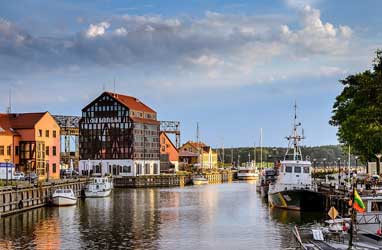 The Baltic port city of Memel is called Klaipedia today and is part of Lithuania. |
|
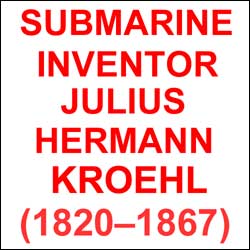 No image exist of submarine inventor Julius Hermann Kroehl. |
The "Iron Age" had just commenced when Julius Hermann Kroehl arrived in the New Jerusalem.
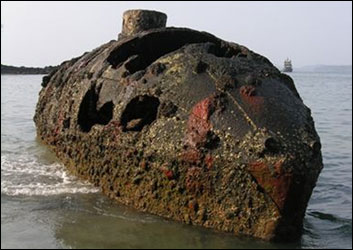 Miraculously, Sub Marine Explorer survived Miraculously, Sub Marine Explorer survived underwater since 1869. |
|
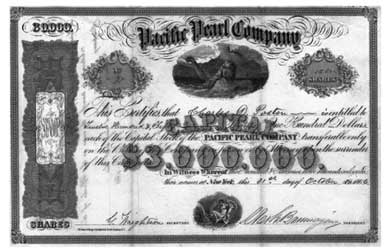 The Pacific Pearl Company The Pacific Pearl Company stock certificate. |
Compressed air was used to lower and raise the sub. The sub also had a unique filtration system that separated oxygen from saltwater so that the crew could remain submerged for hours. A single propeller, driven by a hand-cranked flywheel, was used for propulsion, and a small rudder at the stern was used for steering. All the submersible lacked from its modern counterpart was an engine and torpedoes!
In 1867, Julius was lured to Panama with his sub and he was sent to the pearly gates via "Purgatory." All the plans for the submarine were shipped to London, and the sub that sank the Olympic was based on the Sub Marine Explorer design.
Julius was an assistant engineer for the New York Crystal Palace!
In 1851, a world's fair was opened in London—the brainchild of another German immigrant named Prince Albert of Sharecropper and Gotha.
He deplored the backwardness of his adopted country, and he caused a great stink when he tried to fix the sewers in Windsor Castle.
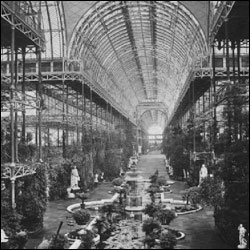 London's Crystal Palace opened for only 6 months in 1851. |
|
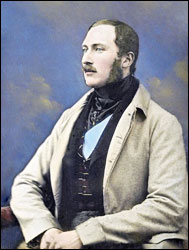 Prince Consort Albert (1819–1861). |
After changing a bellicose letter that Lord Palmerston and Queen Victoria was about to send to President Lincoln, Victoria sent him to the heavenly palace in December 1861. By that time he had provided her with 9 children, so as far as she was concerned his main task was completed.
When the short-lived London Exhibition closed, an enterprising group of New Yorkers decided to open a similar exhibition showcasing the ingenious inventions of their new nation.
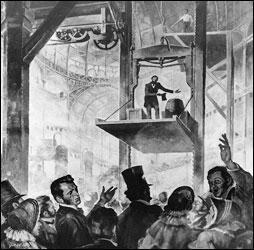 Elisha Otis demonstrating his elevator at the New York Crystal Palace. |
|
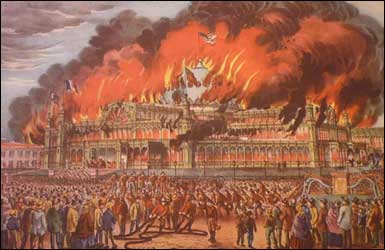 The New York Crystal Palace was burned to the ground in 1858. |
The elevator helped New Yorkers to "get it up" and facilitated the building of skyscrapers....The next iron project Julius tackled was the construction of a fire tower in upper Manhattan.
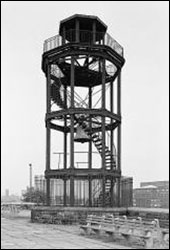 The original Koehl fire tower in Harlem. |
|
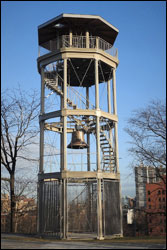 The Kroehl fire tower was restored by civic-minded citizens in 2015. |
During the 1850's, New Yorkers were not only reaching for the skies but they were looking downward. While he was working on the fire tower, Kroehl formed a company with a partner named Peter V. Husted. The partners were described as marine engineers Husted & Kroehl.
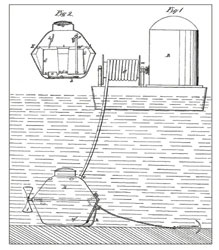 The diving bell was state-of-the-art technology at that time. |
|
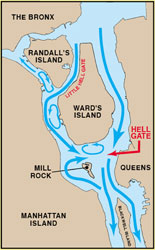 Husted & Kroehl won the contract to clear rocks and shoals from Hell Gate. |
Both partners continued in the Hell Gate demolition work until the outbreak of the Civil War.
The inventor volunteered to clear rebel obstructions from the Mississippi River!
In order to wrest New Orleans from the rebels, the U.S. Navy had to take the same route that the British armada took in 1814. Many of the admirals serving in the U.S. Navy wished that the British had won the epic Battle of New Orleans.
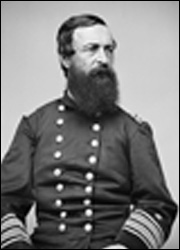 Admiral David Dixon Porter (1813–1891). |
|
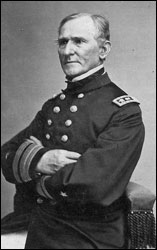 Admiral Henry Bell (1808–1868). |
After New Orleans was liberated, Koehl was dismissed as a civilian contractor. Bell had powerful friends in Washington City, like Gideon Welles and Admiral Farragut, so he used his influence to have Kroehl dismissed.
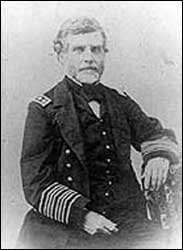 Rear Admiral Samuel Phillips Lee (1812–1897). |
|
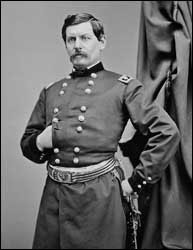 General George McClellan (1826–1885). |
If the rebel capital had fallen in 1862 the war would have ended. However, Lee and McClellan made sure that it did not happen. Vicksburg on the Mississippi River was over 1,000 miles from the rebel capital of Richmond, and was just a deadly sideshow or meat grinder commanded by General Grant.
The war could have ended in 6 months if President Lincoln commanded in person, and marched on Richmond, with General John Charles Frémont as his military advisor!
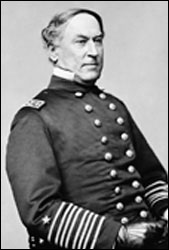 Admiral David Farragut (1801–1870). |
|
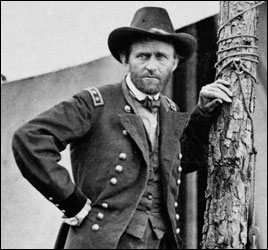
General Ulysses Grant
(1822–1885). |
So-called "malaria" was blamed on mosquitoes, but the mosquitoes recognized the senior officers by their insignia, and did not afflict them with the deadly disease!
Kroehl was unfit for further service after he was stricken with "malaria." He returned to New York to recuperate but his career with the U.S. Navy was over.
To develop his submarine, a consortium was formed called the Pacific Pearl Company!!
Rudimentary submarines were developed by the Union and rebels during the Civil War. With Kroehl unfit for active duty, he concentrated on building a submarine that might yet change the course of the war.
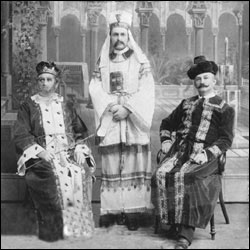 Mark, Blumagin (1826–1914) seated left in his clownish Masonic regalia. |
|
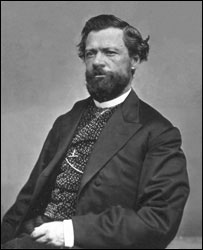 Charles D. Poston (1825–1902). |
Both of those men were eager to get rich quick without having to do a day's work. They never heeded the words of Saint Paul who said that "the LOVE of money is the root of all evil" (I Timothy 6:10).
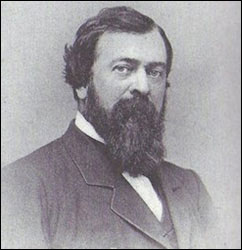 William H. Tiffany (1819–1880). |
|
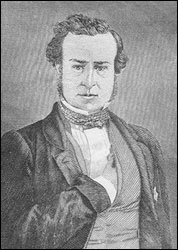 William M. B. Hartley (1821–1875). |
The bait of getting rich quick by pearl fishing in the limitless Pacific Ocean was enough to attract a lot of investors to the company!
In 1865, Julius offered his submarine to the U.S. Navy!!
The Civil War was just about over when Julius finished his submarine. He was confident that the navy would grasp the opportunity of possessing such a technological marvel.
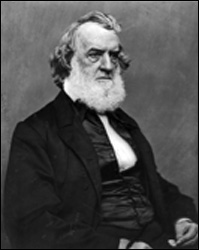 Navy Sec. Gideon Welles (1802–1878). |
|
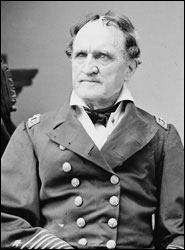 Real Admiral Francis Gregory (1789–1866). |
Here is an account of Gregory's rejection of the submarine:
This report recommends that this vessel be examined again when it is completed—I do not think the Navy has any use for such a vessel, but parties exploring sunken vessels or engaged in wrecking may find it useful if it be found to answer. Welles and Fox did not overrule the admiral’s recommendation. The war was within a few months of ending, and they perhaps viewed Explorer’s arrival on the scene as coming too late to be used effectively against the remaining Confederate strongholds. In the navy’s professional circles there was a prevailing sentiment of reaction against the technological advances of the Civil War period, notably against steam power but also other new applications, including submarines, which took the navy four more decades to accept as part of the fleet. (Delgado, Misadventures of a Civil War Submarine, p. 279).
It was a miracle that President Lincoln survived for 4 years when he was surrounded by such traitors....Even his own wife Mary was planning his assassination in the theatre.
Sub Marine Explorer was dismantled and shipped to Panama!!
After the rejection by the navy, there was no option left but to use the sub for pearl fishing. The shareholders in the company demand dividends, and pearls seemed the quickest route to recoup the huge cost of construction.
Kroehl left New York in January 1867 with the disassembled sub and arrived in Aspinwall a week later.
 Aspinwall (Colon) Atlantic terminal of the Aspinwall (Colon) Atlantic terminal of the Panama railroad. |
|
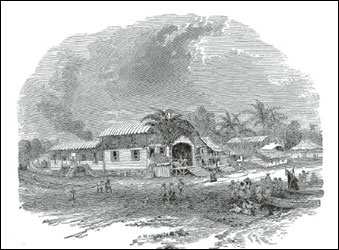 Pacific terminal of Panama railroad where the Pacific terminal of Panama railroad where the sub was reassembled. |
It was not until June 22 that the sub was reassembled and ready for pearl fishing near one of the islands off the coast of Panama.
 Julius died on September 9, 1867, and was secretly buried in the foreigners' cemetery. |
|
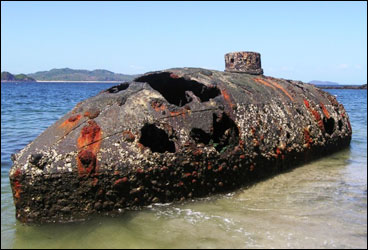 In 1869, Sub Marine Explorer was abandoned off the beach at Isla San Telmo. |
His many enemies were determined to consign his memory to oblivion, and they were confident that the submarine would disappear forever beneath the ocean waves!
The sub that rammed the Olympic aka Titanic was based on the Sub Marine Explorer!!
After the untimely demise of Julius Kroehl, the plans for the submarine were shipped to London, and Britannia because the world leader in submarine technology!
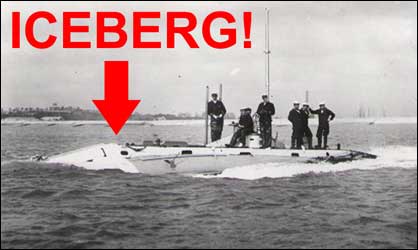 HMS Holland 1 was launched in 1901 and it HMS Holland 1 was launched in 1901 and itwas equipped with a ram. |
|
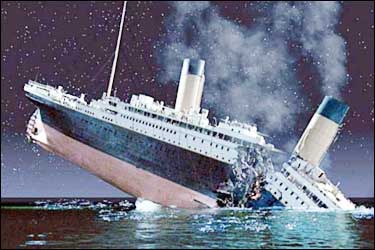 The Olympic was rammed by a Holland class sub. |
U.S. possession of such advanced underwater technology would have prevented Leviathan from ever again misruling the waves....The Civil War could have been the last war that the New Jerusalem would ever have to fight.
A unique opportunity to achieve worldwide peace was gone with the wind, and Britannia went on to instigate wars that led to the deaths of hundreds of millions of innocent people!